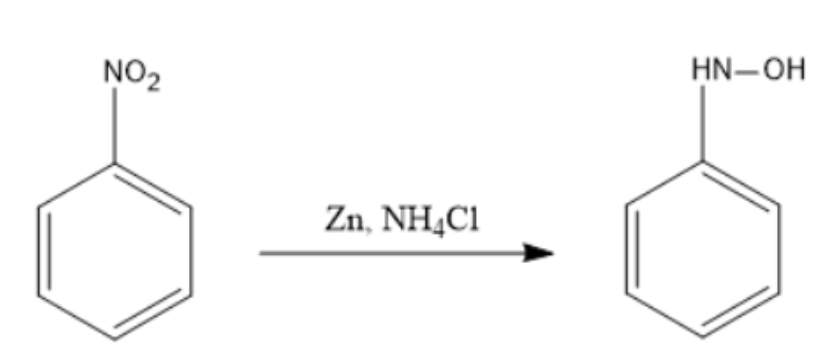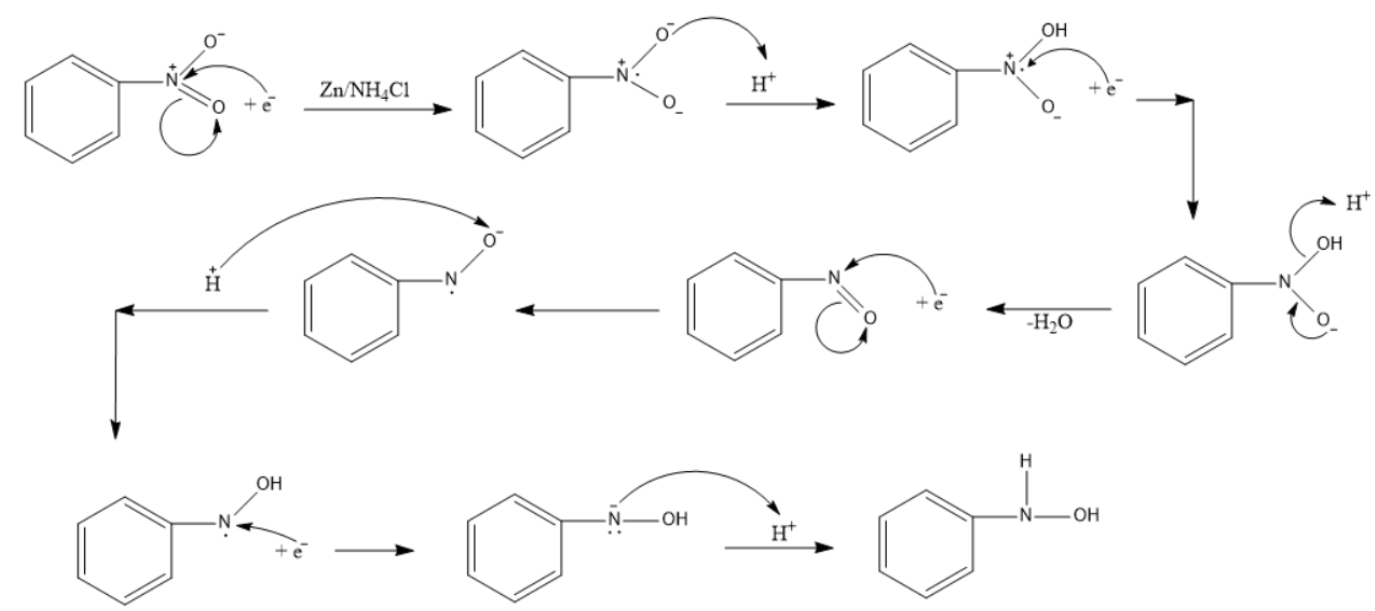Question
Question: Reduction of nitrobenzene in the presence of Zn \[N{{H}_{4}}Cl\] gives: A) Hydrazobenzene B) Ani...
Reduction of nitrobenzene in the presence of Zn NH4Cl gives:
A) Hydrazobenzene
B) Aniline
C) Azobenzene
D) N-phenylhydroxylamine
Solution
Hint: Ammonium salts, such as ammonium formate and acetate, can also be used as a promoter for zinc reduction. Promoters, like ammonium chloride, serve as electrolytes and complex forming agents to enable zinc reduction of nitrobenzene to proceed at near ambient temperatures.
Complete answer :
For reduction of a nitro compound into an amine, it requires six units of reducing agent.
R−NO2+6H++6e−→RNH2+2H2O
The whole reaction doesn’t occur in a single step, instead it requires multiple steps with forming a chain of intermediates, which with strong reducing agents in acidic solution have a small transient existence. Intermediates formed by adding two units of reducing agents to RNO2 are nitroso compounds, RN=Oand N-substituted hydroxylamines RNHOH.
RNO22[H]−H2ORN=O2[H]RNHOH2[H]−H2ORNH2
The n- substituted hydroxylamine can be directly obtained from the respective nitro compounds with Zn and NH4Cl.

Reduction of nitrobenzene with the help of Zn is an electrolytic reaction done in the aqueous phase, where an electrolyte is required to serve as the promoter. Generally, ammonium chloride NH4Cl is used as a promoter and the reaction is carried out at a temperature of 50℃– 65℃.
The exact mechanism for the formation of N-substituted hydroxylamine can be seen below.

Note: Under mildly alkaline conditions, the reduction is terminated at the formation of N-substituted hydroxylamine. But under acidic conditions, the reaction proceeds further to form aniline as seen in the picture below. In the second branch we have used Zn and HCl instead of Zn and NH4Cl.

